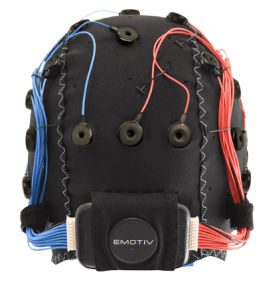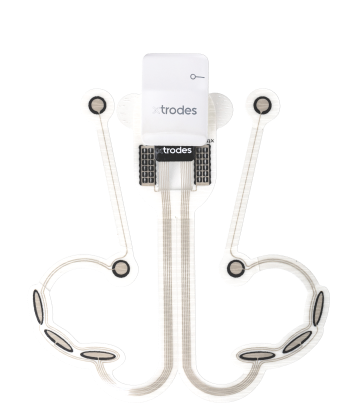Have you ever sat through a presentation where, slide after slide, you are trying to stay focused, to understand and absorb the data presented? With slide after slide of bulleted words, numbers, and supporting imagery, your mind trails off to other matters. I’m sure you have experienced this. We all have.
You’ve probably heard the phrase “death by PowerPoint”! Folks tend to follow the same approach when formulating a presentation; they do their research, gather the data, and then plot that data in a slide-by-slide format, not truly considering how to truly engage and convince their audience. Hidden behind each slide, behind all the data, however, there is a story. And it’s this story that will connect emotionally with the audience.
Stories connect with people emotionally as well as intellectually. When you tell a story, there’s a far greater chance of your audience joining you on your journey; not just understanding but embracing your message fully. Achieving outcomes through a presentation will occur when people enjoy the journey.
What if you could take this a step further and totally engage with people’s emotions while telling a story? And, if you could tell a story that you’re passionate about with a global impact, the possibilities are unlimited! If you know a movie director, you could have an award-winning blockbuster!
Emotional intelligence: a basic explanation
Emotional intelligence (otherwise known as emotional quotient or EQ) is the ability to understand, use, and manage your own emotions in positive ways to relieve stress, communicate effectively, empathize with others, overcome challenges and defuse conflict.
The Inside Out Movie
Inside Out brought increased emotional understanding to the movies. Through this movie, it was realized that we could bring about increased awareness and change in people by managing our emotions. During production, the filmmakers consulted psychologists and neuroscientists to achieve greater accuracy in their portrayal of the mind.
“There’s always room for a story that can transport people to another place.” —J.K. Rowling
Movies allow us to suspend our disbelief about what is possible, and Inside Out is no different. When we watch this movie, we give ourselves permission to engage in a fantasy or another world with the characters, helping us build new neural pathways and benefits to our mental well-being.
The brain has an amazing ability to change throughout the course of our lives, allowing us to learn new things with new experiences. By fully engaging ourselves in a movie, our brain adapts to new experiences, learns more information, and creates new memories: a winning combination for us all!
Throughout our lives, we can display varying degrees of emotional intelligence depending on our background and experience. Experiencing a full range of emotions like the movie may not have been possible. So why can’t our own life experience be like Inside Out?
The characters in Inside Out helped us experience five different emotions: joy, sadness, fear, anger, and disgust. Just imagine if you could suspend disbelief all the time! You could experience and manage all of your own emotions and be the star of your own movie. This exciting new movie could deliver a story and message to the world that engages everyone’s emotions: it could be an action, adventure, or comedy movie.
Real Stories that have changed minds
I’m sure during your working life you may have started early at some stages and noticed who else is in the office at the same time, for example, a cleaner. By taking time to acknowledge this person, the work they do, and how their day has been, over time, this becomes appreciated and remembered by the person doing the cleaning.
The key point here is that a story is developed and a person is considered: you impact in their life. When you take this to a broader scale, you can create huge impacts through storytelling!
Here are some great TEDx stories highlighting the potential for engaging with others through storytelling, not just using data:
- Karen Eber shows that storytelling works, not just data! When storytelling and data come together, it you connect to the information differently. Through this, you gain empathy, increase oxytocin, and build trust. With a powerful ballad that uses data, you build an idea, leave people changed, and add value: people feel they are part of the story.
- Andrea Olsen highlights that you change people’s minds through changes in perception gaps and emotions rather than logic. It’s important to shift our thinking from figures to cognitive ones, understand the person, and build rapport.
- Chris Olsen emphasizes that stories are data with a soul, which builds better societies with increased knowledge.
By connecting your data and information into a story, you engage people, take them on a journey, and create unrealized possibilities!
Storytelling with emotions will change minds
We live in a time where we not only use technology as an aid, we’re driven by it. Unfortunately, the by-product is that we disconnect from ourselves. This disconnection has led to the following impacts—people manage perceptions, relationships are difficult, stress increases, and we don’t know ourselves and each other. It is like we are operating across artificial platform generated by technology. When we talk to real people, it becomes so hard as we’ve become accustomed to communicating at the “platform level” only.
In recent times, social media has seen the need to expose our vulnerable sides and provide opportunities for sharing our stories. In other words, people get to know us more by understanding our emotions.
Better self-awareness leads to the improvement of our emotional states and powerful individual outcomes.
Demystifying the Brain: The EMOTIV “Outside In” approach
EMOTIV has turned the tables on how we use technology, allowing us to use it to our advantage and connect with ourselves. We’re no longer driven by technology; we’re now in the driver’s seat! Just like the Inside Out characters, we can now better understand our brain and emotions and how they relate to what we do day in, day out.
EMOTIV allows us to know ourselves better and understand the possibilities of neuroscience, not only in a research lab but also in our everyday lives.
By developing technology for personal, research, and development applications, we’ve maintained an uncompromising approach to the design and development of our mobile EEG (electroencephalography) headsets.
Spatial resolution—detecting activity across the main cortices of the brain—is crucial for obtaining high-quality data. The wealth of brain data we have accumulated and analyzed, as well as our detection algorithms, we believe, are second to none.
EMOTIV’s EEG headsets detect six measures of mental performance derived directly from your brain activity: stress, engagement, interest, excitement, focus, and relaxation. Using this information, you then understand more about your capabilities, just like having your own virtual coach.
EMOTIV gives you your own virtual coach to track, train, and optimize your brain power, fire up your performance, and supercharge your mental capacity and flow. Personalized neural insights can help you change your behavior, adapt, and learn. Neural science seeks to understand how the nervous system functions, matures, and maintains itself; neuroscience research often focuses on how the brain influences cognitive behavior and function.
With EMOTIV, you and your team can collaborate in the workplace, influence outcomes across worthwhile causes, and have fun while you do it! EMOTIV can use external perceptions and turn this into internal understanding for change globally. The “Outside In” movie opportunity is here for you!
Possibilities with Impact
There’s a huge scope in collaborating with EMOTIV. EMOTIV’s EEG headsets allow you to understand and engage with people’s emotions. You can create a story around the possibilities for people and the planet in the future through behavioral change. By bringing increased emotional understanding to the movies, working from external perceptions to knowing how we all feel internally, we can bring about awareness and change in people.
Research has characterized the relationship between EEG signals and human emotion. The EMOTIV EPOC headset capitalizes on these signatures to recognize emotions in real time.
Key points that you can consider to make a difference in the future are:
- Take time to understand what’s happening on the outside with people—a direct reflection of what’s inside.
- Take this exciting opportunity to Commit, Connect, and Create with EMOTIV, creating a new world you have never seen before!
- “Outside In” could be an incredible opportunity for you to create and change people globally through a blockbuster event.
To further emphasize the point about stories creating change through movies, the movie Awakenings was a 1990 American drama film based on Oliver Sacks‘s 1973 memoir of the same name. Oliver Sacks, M.D,. FRCP, was a physician, a best-selling author, and a professor of neurology at the NYU School of Medicine. The New York Times referred to him as “the poet laureate of medicine”. His book was about a group of patients who had survived the great encephalitis lethargica epidemic of the early twentieth century. Sack’s book inspired the 1990 Academy Award-nominated feature film starring Robert De Niro and Robin Williams.
As a medical doctor and a writer, Dr. Sacks achieved a level of popular renown rare among scientists. More than a million copies of his books are in print in the United States alone. His work was adapted for film and stage, and he received about 10,000 letters a year.
Dr. Sacks variously described his books and essays as case histories, pathographies, clinical tales, or “neurological novels.” Describing his patients’ struggles and sometimes uncanny gifts, Dr. Sacks helped introduce syndromes like Tourette’s or Asperger’s to a general audience. But he illuminated their characters as much as their conditions; he humanized and demystified them.
The potential is in your hands to create real change and create a foundation for future generations. EMOTIV is a recognized pioneer and market leader in the field of BCI enterprise solutions and EEG technology. Its award-winning EMOTIV EPOC+ headset and the 10-year anniversary edition EPOC X provide professional-grade BCI data for academic research and commercial use (EMOTIV EPOC X brain-computer interface).













